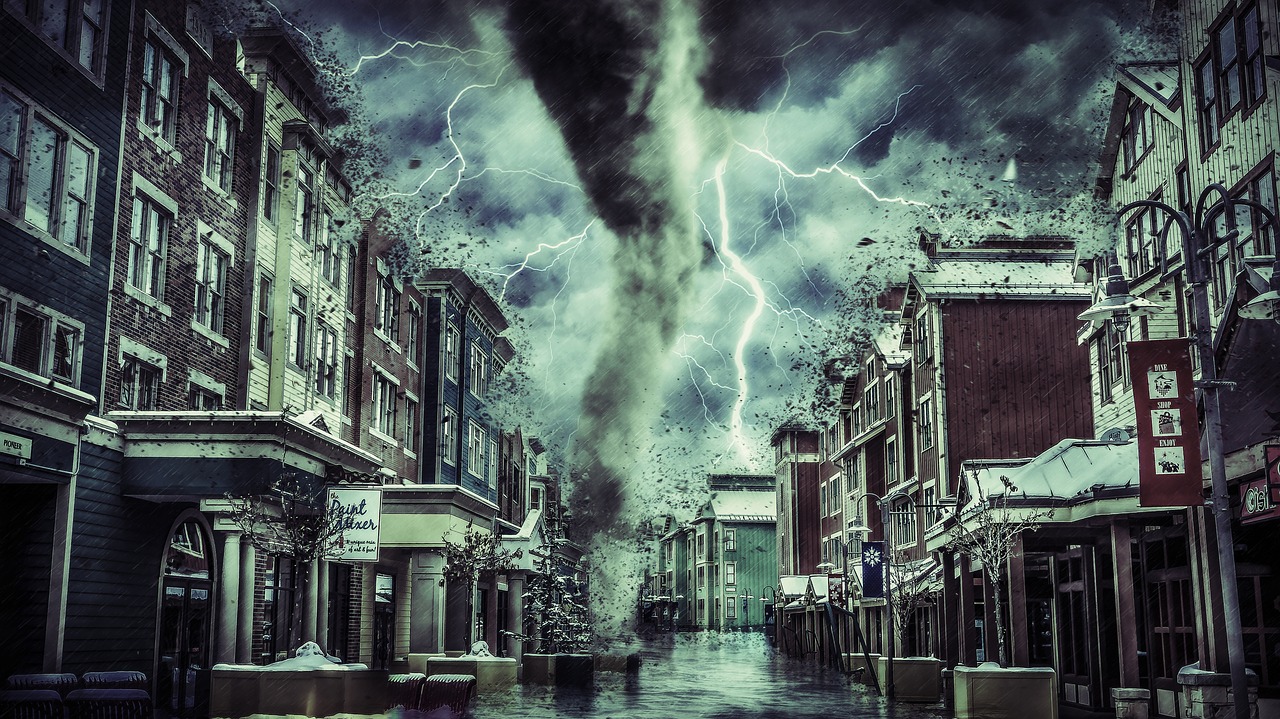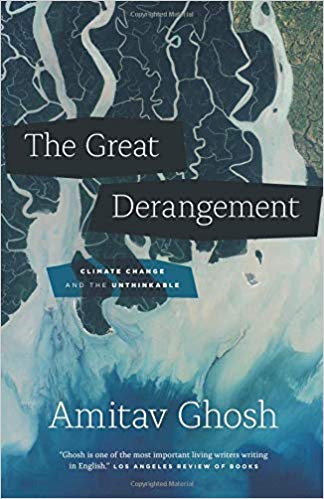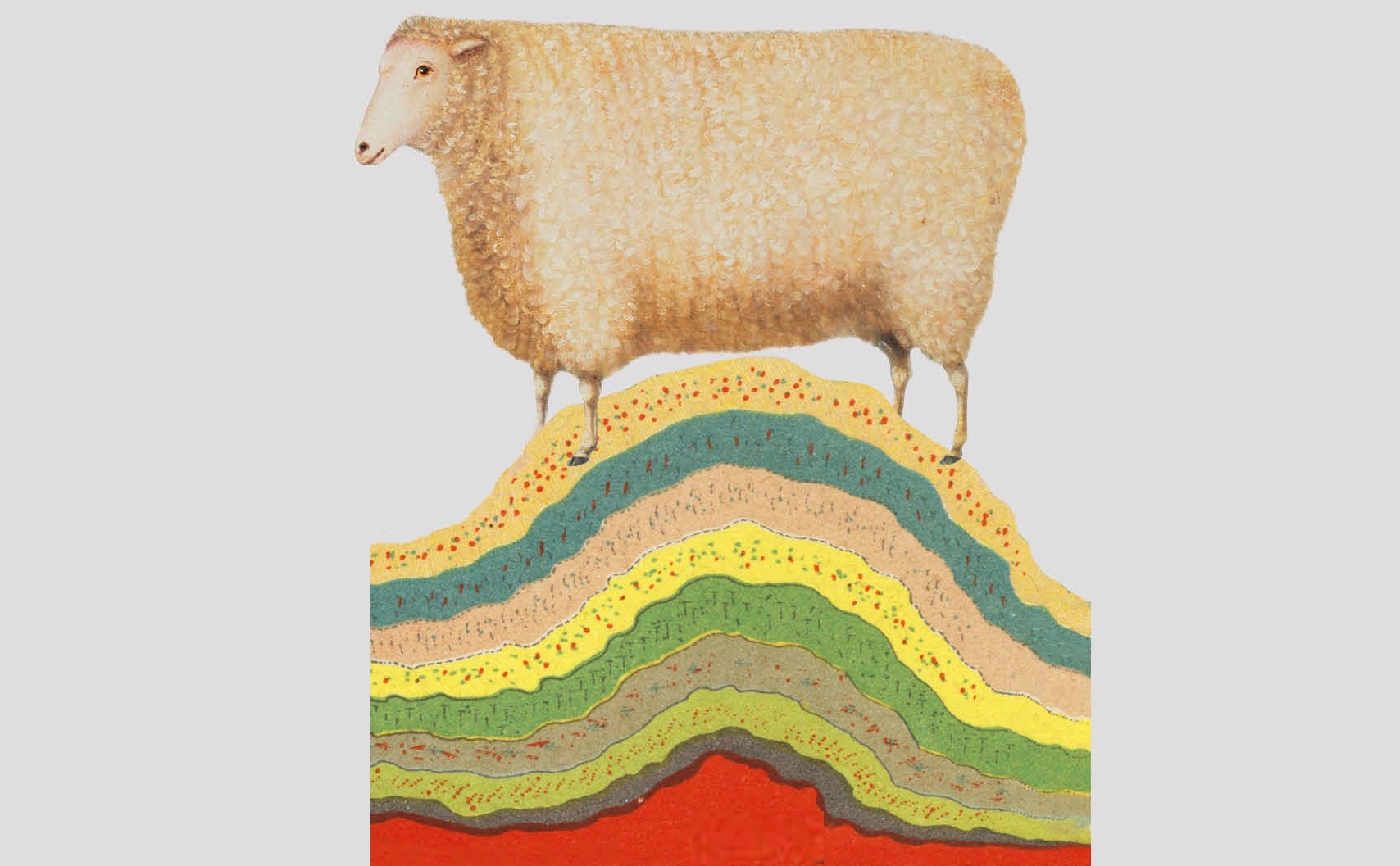Books & Culture
All Literature Is Climate Change Literature
Do we need a new aesthetics of climate change, or do we just need to revisit the classics with the appropriate sense of fear?

In his book-length essay The Great Derangement, Amitav Ghosh makes the case for a new literature of climate change. He argues that the modern novel is not up to the task of representing a vague, omnipresent threat to the survival of humanity. Fiction is too obsessed with the inner lives of its characters to survey a changing earth. What we need, he contends, is a full overhaul of what counts as “serious fiction”: a shift from close-focus domestic realism to a global view of environmental vulnerability. The criteria of literature must be adapted to make room for the aesthetic conditions of ecological catastrophe.
Ghosh acknowledges that environmental apocalypse isn’t a brand-new literary concern; he cites several authors, including himself, whose work he sees as integrating “the unthinkable” of climate change in fiction. Finally, though, he believes that the catastrophe of climate change will require an artistic storming of the gates. “I think it can be safely predicted that as the waters rise around us, the mansion of serious fiction, like the doomed waterfront properties of Mumbai and Miami Beach, will double down on its current sense of itself, building ever higher barricades to keep the waves at bay.” If one function of fiction is to help us understand the world, Ghosh thinks the literature we have now is failing in the face of global warming. We’ll need new genres, structures, maybe even words.
In fact, climate change is far from a new subject for literature. On the contrary, the variable, impassive earth is a motivating image in many of the works we already celebrate. The scale of the incoming disaster is unprecedented; our vulnerability to the climate is familiar. We just have to recognize the theme for what it is.
Ghosh notes that the scale of global warming makes it difficult to grasp and therefore hard to write about, citing Timothy Morton’s term “hyperobject” for the phenomenon. But he doesn’t acknowledge the flip slide: Precisely because of its scale, the outline of climate change may be perceived everywhere. The real alchemy of meaning takes place not on the page but in the mind of the audience. In other words, the rumbling of the archaic voice of the earth is audible as long as the reader is alert to it. Ghosh’s idea that the “individual moral adventure”—John Updike’s definition of the novel— in fiction and the phenomenon of global warming don’t go together is too categorical. Even literature that is driven by individual characters and complicated moral growth is full of insights and premonitions of climate change.
The variable, impassive earth is a motivating image in many of the works we already celebrate.
In fact, much of “canonical” Western literature unites the individual moral adventure with a sense of collective responsibility toward the earth. Ghosh doesn’t deny this, but gives too much weight to contemporary fiction as shaping our view of the world, compared to the sort of texts that many people read in college. For example, Shakespeare’s Macbeth is thoroughly modern in its treatment of human psychology, but the language of climate is also everywhere in it (sometimes in the same sentence). Greed “grows with more pernicious root / Than summer-seeming lust,” and the prophecy of Macbeth’s fall hinges on the idea that a forest can rise up and do battle. One of the most remarkable nature lines is Macbeth’s own: “The earth was feverous / and did shake.” He imagines the earth as weak like a stricken child or elder, and realizes that he is a viral agent of the world’s disease. The land suffers when the people on it delight in cruelty. Dante Alighieri gives us similarly piercing metaphors in The Divine Comedy. In Canto IX of the “Inferno,” he writes, “That marsh, which sends out so much stinking breath, / surrounds on every side the weeping city / which we cannot now enter without wrath.” The image homes in on the secretions of the face, making a startling connection between carbon dioxide-producing breath and tears, what humans sow and reap. Substitute “that marsh” for “the factory,” and you have an indelible description of modern day Beijing.
A highlight of The Great Derangement is Ghosh’s analysis of the way that industrial arrogance and blinkered imperialism shroud our essential vulnerability to nature. But is a whole new aesthetic of fiction necessary to remind us of this? Here’s King Lear, exiled to the countryside:
Poor naked wretches, wheresoe’ever you are
That bide the pelting of this pitiless night,
How shall your houseless heads and unfed sides
Your looped and widowed raggedness defend you
From seasons such as these?
The sensation of cold rain on unprotected skin and the dull, insistent irritant of hunger were new experiences to the fallen King Lear, as they will be to us Europeans and North Americans when our infrastructure collapses to rising water levels. Like Lear, we’ll soon find out that no matter how stable the worlds we build around us seem, they are arbitrary and impermanent.
We will also learn to stop assigning benevolence to certain kinds of weather. Under the extremes caused by global warming, we will grieve for the rain during the heat and the sun during the storms. In The Aeneid, another classic story with the momentum of an individual moral adventure, Virgil was alive to a very modern worry, disease of the sun. He describes pale ghosts from “Down Below” being “exposed to the scaring light” (the translation is by David Ferry). Listen to the sound of that “scaring”: it twists the rays of the welcome sun into something ugly, modern, prophesying what now mutilates our skin.
Ghosh predicts that one of the first casualties of climate change will be our “uniformitarian expectations” about “the regularity of bourgeois life.” The one book in every standard hotel room can tell us much about that disruption. In the Old Testament, the chronicler describes a famine. The Arameans “laid siege against [Samaria] till a donkey’s head cost eight pieces of silver and a quarter of a qab of pigeon droppings five pieces of silver” (2 Kings 6:25, in the new translation by Robert Alter). It is a kind of nightmare shopping list, and not far removed from the reality of modern famines, as Yan Lianke’s 2015 novel The Four Books, about the Cultural Revolution, confirms. We also know that the poor will be affected most by climate change. This line from the Hebrew Bible evokes the persistence—even flourishing—of economic exploitation in times of bitter suffering.
In the new literature Ghosh imagines, writers will better understand how to situate people within the whole environment. Animals, rivers, mountains will also be actors in the upcoming apocalyptic drama; we will learn not to “arrogate all intelligence and agency to the human,” Ghosh writes. In the introduction to the Decameron, Giovanni Boccaccio similarly points out the entanglement of human and animal life in times of crisis. “It was frequently observed, that things which had belonged to one sick or dead of the disease, if touched by some other living creature, not of the human species, were the occasion, not merely of sickening, but of an almost instantaneous death,” he writes. We share our destiny with everything else on earth. Boccaccio’s forceful language shows how perilous it is when we think we can unwind and separate our fates.
In The Great Derangement, Ghosh doesn’t mention the literature of the Flood, humanity’s great dress rehearsal for ecological catastrophe. This literature definitely isn’t modern, and is far removed from his understanding of the “serious,” realistic novel. Still, these are widely read, foundational stories that often feature singular heroes, and they accomplish much of what a new fiction could. In his Metamorphosis, Ovid describes the flood like this: “The rivers spread and swept away together / Crops, orchards, cattle, men, / Temples and shrines with all their holy things.” The gods are no match for rising water levels. Our secular objects of worship—especially, as Ghosh argues, beachfront real estate—won’t be either.
The ancient chronicler of Genesis writes of the flood, “All that had the quickening breath of life in its nostrils…died.” The adjective “quickening” is a profound statement on the shortness of human and animal life compared with the progress of ecological time, expressed with an almost magical compression typical of the Hebrew Bible. Another verse, from 2 Kings 2:19, thought not about the Flood, is equally concentrated when talking about the climate: “The water is bad and the land bereaves.” The construction “the land bereaves” might do the work of a hundred explicit climate change novels, if a fraction of the sheer interpretative power focused on the Bible was diverted to also consider its premonitions of global warming.
Perhaps most resonant, however, is the Epic of Gilgamesh. Sometimes it’s helpful to turn to another artist’s reading of a classic story, and the composer Gérard Grisey’s setting of text from the Gilgamesh myth from 1998 is, to my mind, the definitive interpretation. “I opened a window / And the day fell on my cheek,” a soprano sings, exposed to music that is gently waving, crystalline, hushed. You can hear the wind players gasping for breath during these long passages, as a person might who has narrowly avoiding drowning. “The dissociation…between the voice and the music is a sort of reflection of the situation of the human and the cosmos,” Grisey wrote in his journal in July, 1996. “Fusion and harmony or indifference and sterile struggle.” Gilgamesh imagines a place most climate change predictions don’t dare to go: a world not just of suffering, but possessed of a stillness beyond humankind.
We already have enough art to help us understand the threat of climate change. We just need to look at it with the appropriate paranoia.
The aesthetic goals Ghosh sets out in The Great Derangement are still worth pursuing. The point is that we already have enough art to help us understand the threat of climate change. We just need to look at it with the appropriate paranoia. Read Another Book, goes the meme about Harry Potter obsessives; when it comes to understanding global warming, I might instead admonish, Read Almost Any Book, and, if you are aware of the scale of the threat, you will be struck by prophecy. Besides, there are psychological reasons why we might get more from what Ghosh calls literature “that grapples with climate change avant la lettre.” Rightly or not, we tend to give more weight to predictions from the past. The disaster movie 2012 (2009) parlayed a dubious Mayan prophecy into a worldwide gross of around $750 million, when the real apocalypse is already here.
Sometimes it also seems like human imagination flourishes most when kept partly in the dark. Do we extrapolate a worldview from snippets of language better than we synthesize vast quantities of information on an issue like climate change? In politics, global warming is an all-encompassing problem that will require all-encompassing solutions. Ghosh imagines equally revolutionary changes in art. But I think that art works its wonders best through isolated moments, because the tiny lights that spark epiphany are everywhere.









